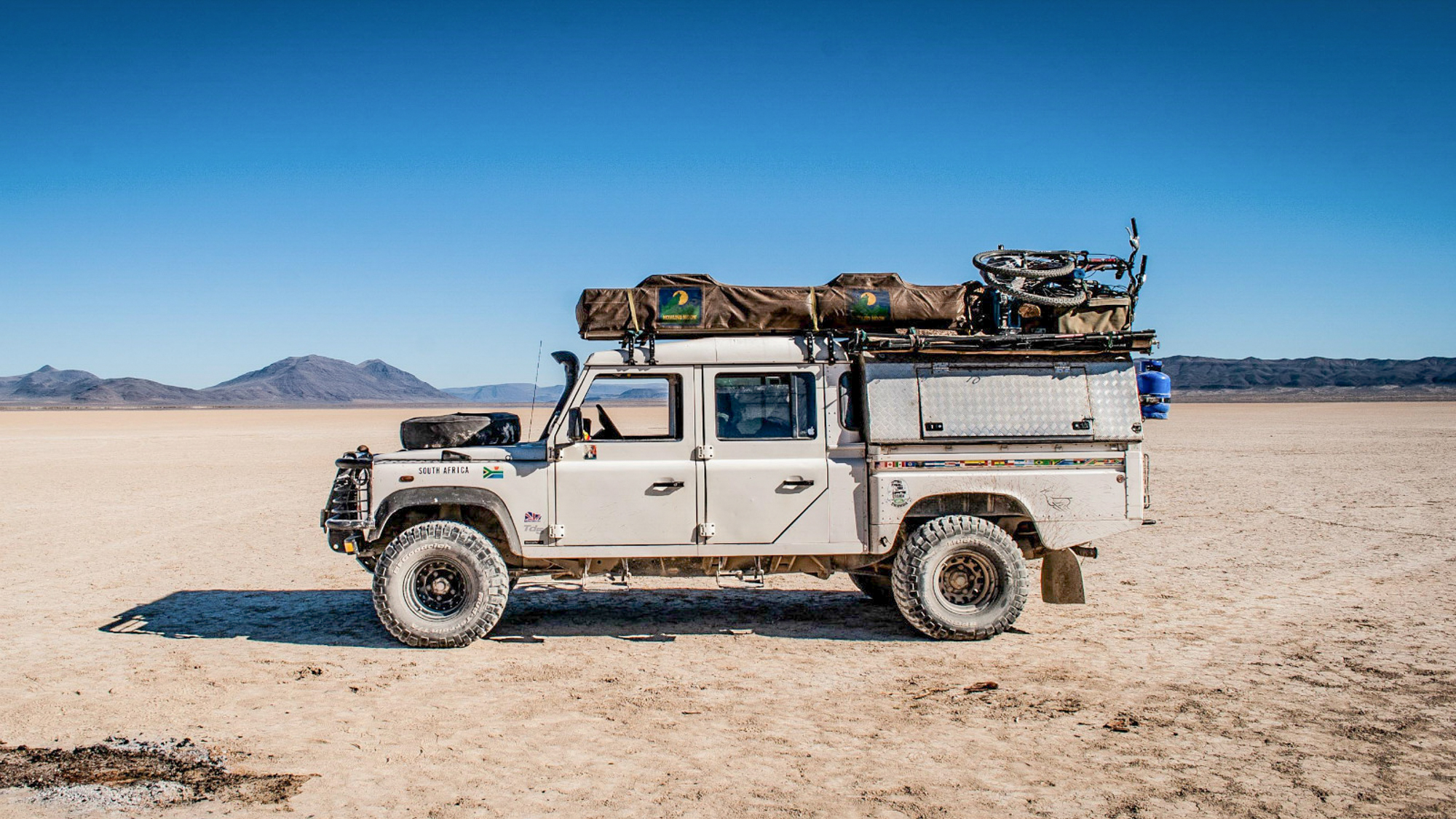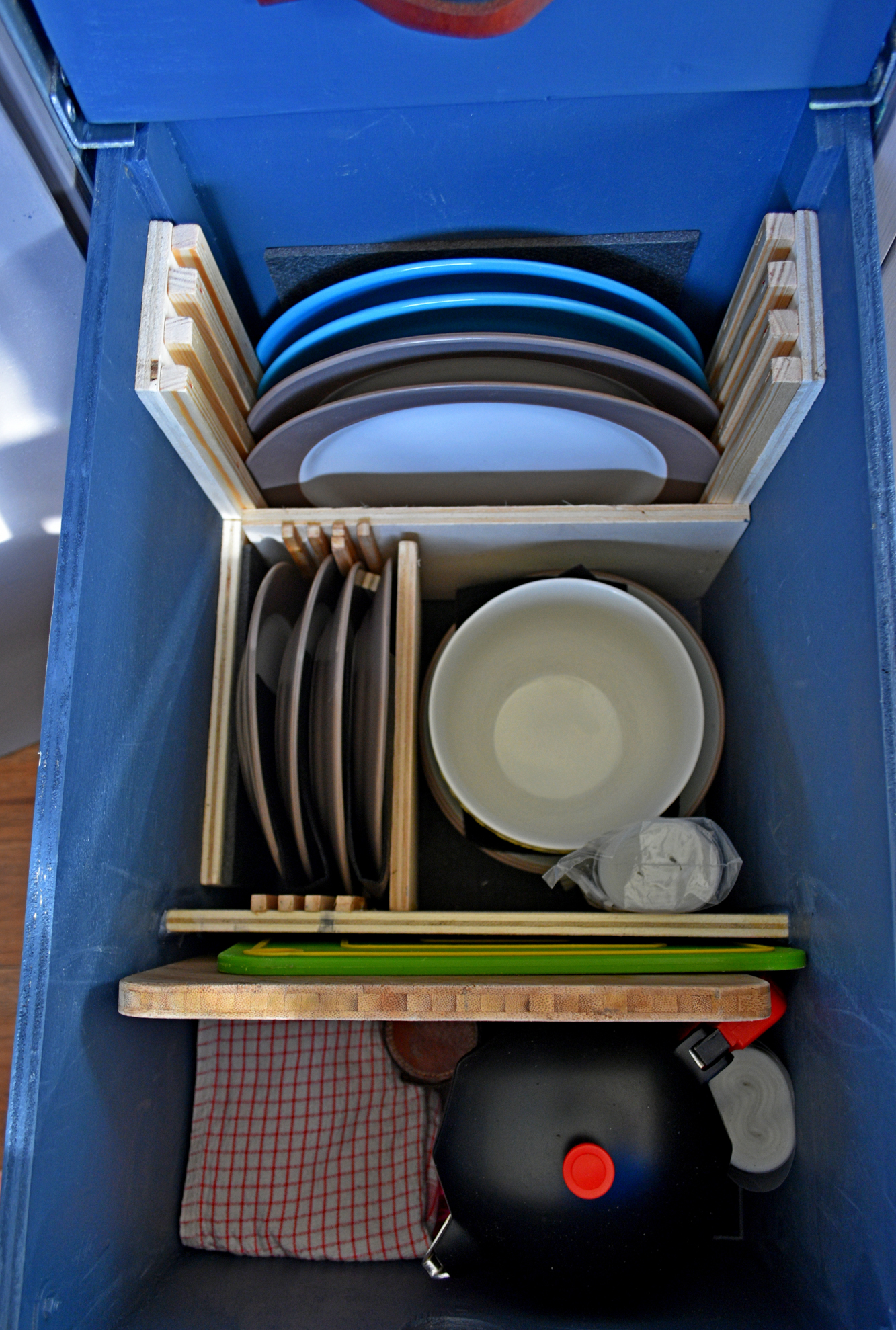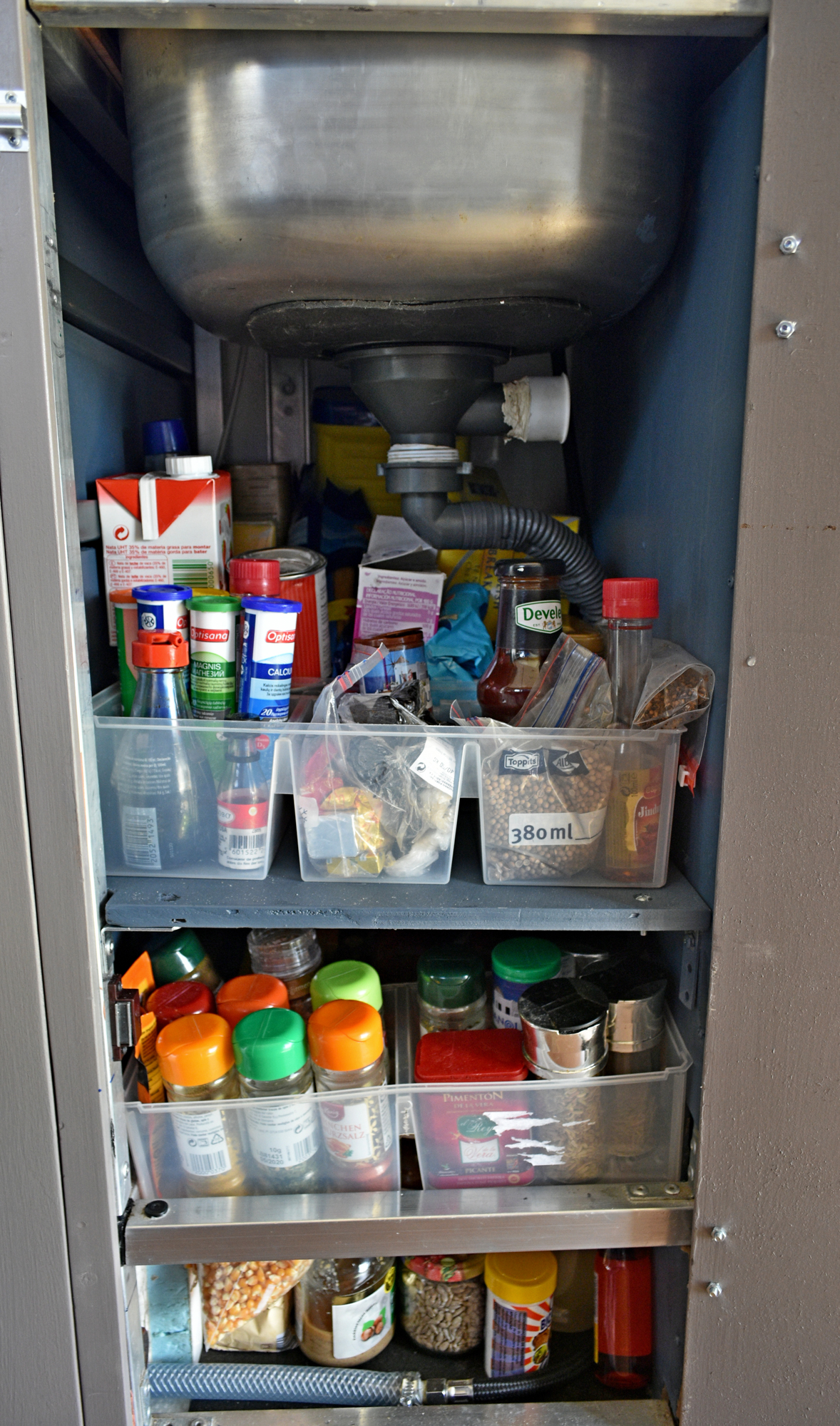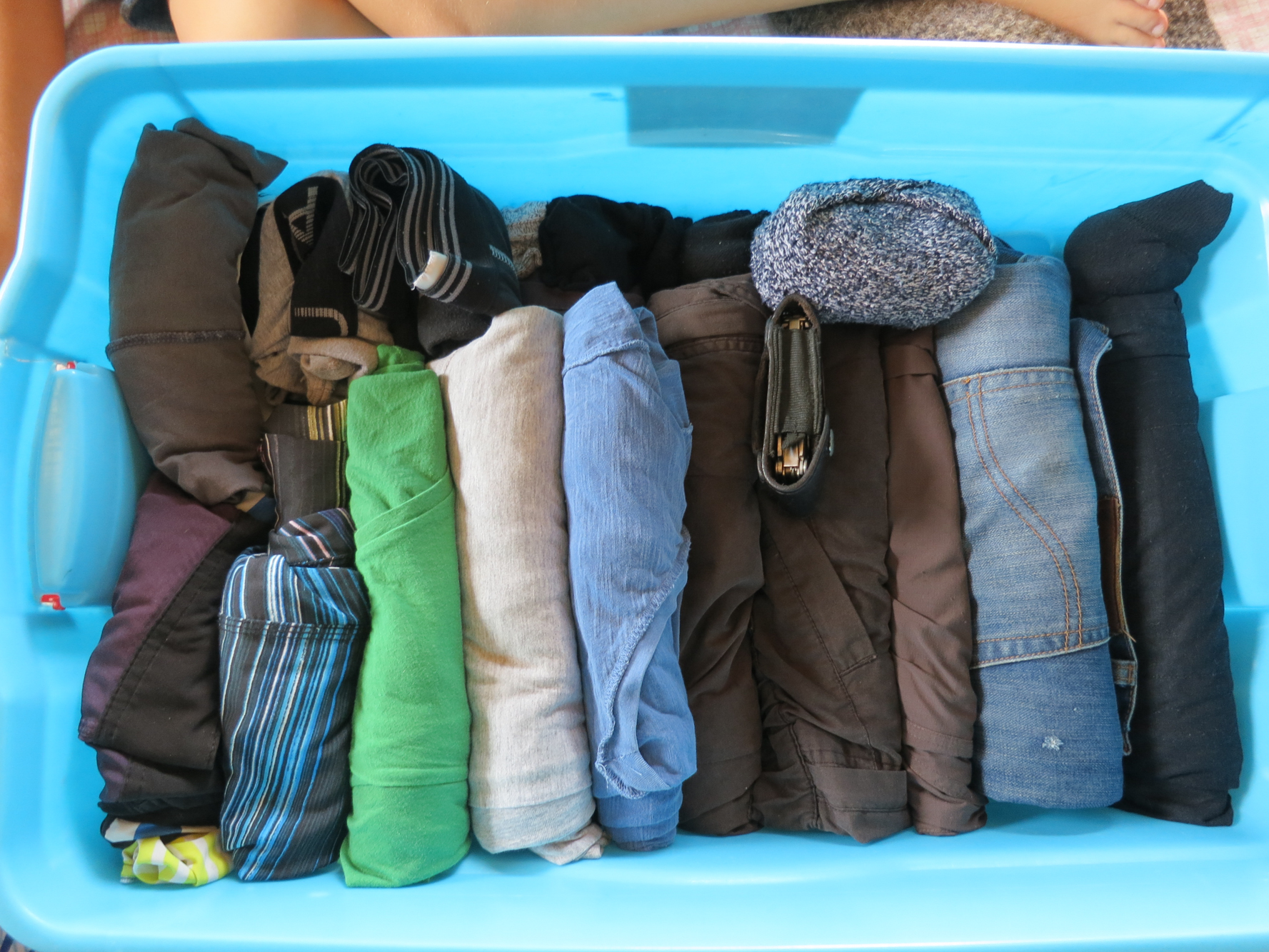In preparation for your journeys, you will no doubt visit REI or Cape Union Mart or Decathlon or whichever “outdoor adventure” retailer has the market share in your country. There you will be seduced by a vast array of products, each seemingly essential and equally desirable. Water filters, solar torches, fire starters, carabiners, deep Arctic sleeping bags, inflatable pillows, collapsible cooking equipment, solar ovens, sporks, and Frisbee plates will all tempt you. Chances are you already have a decent collection of gear sitting at home, a collection which you started assembling when you were 11 years old. Do yourself a favour: resist the temptation to buy new equipment which is not absolutely necessary and keep the money in your pocket. If you have doubts whether you will use it, you probably do not need it. Be ruthless when sorting your existing gear; perhaps have an itemized “definitely maybe” box, which you can leave with a relative or friend who can then post the box to you on the road if you feel that you simply cannot live without the measuring cups, juicer, and curling iron. Remember, wherever you travel in the world there will be stores which stock life’s essentials. Everyone’s needs are different, but in general, gear can be whittled down to the following list.
COOKING EQUIPMENT
- METAL-HANDLED, NON-STICK POTS AND PANS relevant to the size of your cooker and the appetites of your travel companions if not flying solo. Non-stick cookware uses less water and soap and requires less effort to clean.
- NON-STICK-FRIENDLY UTENSILS, to include a wooden spoon and spatula
- COLLAPSIBLE COLANDER to use in conjunction with a similarsized pot. The pot lid can be utilized to steam vegetables, reducing the use of both energy resources and water as you will only need to boil a small amount. Lightly steamed vegetables also retain crispness and more nutrients.
- PRESSURE COOKER, which enables you to be as efficient as possible with both energy resources and time
- METAL KNIVES AND FORKS with plenty of GPS-chipped teaspoons
- EASY-TO-REACH STORAGE SYSTEM for your utensils
- BASIC KITCHEN TOOLS including a bottle opener, potato peeler, tea strainer, metal can opener, large cutting knife (Tiktaalik produces a great range of low-profile, high-quality kitchen knives), and a knife sharpener.
- PLATES, either plastic or wood, or ceramic if you can afford the weight. Plastic does not retain the heat of food, and wood requires extra effort to clean.
- PAPER PLATES are convenient for quick, on-the-go meals and can be easily disposed of.
- METAL MUGS AND PLASTIC CUPS which are non-breakable
- MASON JARS for the wine drinkers. No one likes drinking wine out of plastic or metal cups—mason jars are sturdy, cheap to replace, and can also be used for storage.
- LARGE, SQUARE CONTAINER for washing dishes and carrying water. Square packs easier than round; in fact, everything should be as square as possible.
- WHISTLE KETTLE When busy around camp, you may forget you had a kettle boiling, only to return to find a lot of gas and water wasted.
- TWO FUNNELS One for the “kitchen,” and one for you to use for topping up and transferring vehicle fuel and oils.
- ALUMINUM FOIL, PLASTIC WRAP, AND ZIPLOCK BAGS have a multitude of uses and can be washed and reused.
BRAAI/BARBEQUE
- EQUIPMENT FOLDABLE GRILL Remember, this will need to be packed outside the vehicle or have its own carry bag. After a few months of consistent use, the grill will likely be coated with grease and grit (with or without cleaning), and you do not want it bouncing around in the back of the rig fouling everything.
- GRILL BRUSH Use to clean off said grease and grit once the grill has heated sufficiently over the coals.
- STURDY SET OF TONGS for moving wood and flipping meat and vegetables.
- SMALL, STAND-ALONE, STAINLESS STEEL BRAAI which uses less fuel than conventional campfires and can be used almost anywhere.
- SOSATIE SKEWERS, particularly the large Brazilian variety, are fantastic for the easy flipping and cooking of a variety of foodstuffs. They clean easily, are lightweight, and pack away snugly. They can also be used for impromptu sword fights.
THE COOKER/STOVE
You will likely be spending a lot of time preparing food while on the road, and your cooker must be up to the job. By far the most reliable source of fuel is propane which is also known as liquid petroleum gas or LPG. Motorcyclists and bikers can use little camping stoves to heat their cans of spaghetti or baked beans and for the morning cup of coffee. Overlanders in larger vehicles have more space and therefore more options; ideally, you want a two-burner stove with enough surface area to accommodate two pots or a pot and a frying pan. A good tip is to measure the diameter of the pots and pans that you intend to travel with and to buy a cooker accordingly or vice versa. Depending on your remoteness, frugality, and the number of passengers travelling, you may use the cooker twice or even three times a day. A poorly designed model will frustrate you endlessly—spend less on gadgets and gizmos and more on appliances which will be used regularly.
COOKING FUEL
LPG burns clean with consistent heat, but while it may be the most reliable source of fuel, it can also be difficult to source. There are also cookers that can run on dual fuel such as the infamous Coleman stove, utilizing unleaded gasoline and “white gas.” Finding unleaded gasoline is much easier than finding LPG, but the dual fuel cooker burns dirty and produces a large amount of carbon monoxide which could prove lethal if used in confined spaces with limited ventilation. The Coleman dual fuel stove requires patience and strict adherence to the procedure of pumping the tank for pressure and opening and closing valves at the correct time and temperature; it’s also prone to rust, and spare parts are difficult to come by. Have a look at the Partner Steel range of cookers if you are interested in a stove which will last as long as you do. It is important therefore to carry large LPG canisters which will give you a couple of months worth of cooking between refills. You will need adaptors for countries where tank refilling requires different connections. Filling a tank with butane instead of LPG can result in a month of weak flames and slow-cooking dinners. If this happens, it is important to empty and refill the tank with the correct fuel as soon as possible. Do not drive all the way from Argentina to Alaska while struggling to cook in wind and snow with a little blue flame no stronger than a lit fart.
FOOD STORAGE
Depending on the size of your vehicle, you might want to invest in an electric cooler or a fridge. We swear by the Engel and SnoMaster fridges but have also used a Waeco one for quite a few years. In fact, we have used both an Engel and a Waeco at the same time. The travel models available are more expensive than the fridge you use in your home and draw the most electricity out of your vehicle. It is wise to consider installing solar panels on your vehicle to help generate the power for your fridge, though this is not completely necessary as one, or even two fridges can be run efficiently off a secondary auxiliary battery, provided that the state of cool in the fridge and the charge in the battery are maintained correctly. A fridge allows you to enjoy a cold drink and a steak at the end of a long day on the road but is not ideal for the storage of most vegetables. Vegetables need to be stored in a wellventilated area, and dry foods, spices, canned goods, peanut butter, etcetera should be kept in a dry foods crate.
TAKE CARE OF YOUR FRIDGE
- INSULATION Invest in a cover for your fridge to keep the exterior clean and the interior cool.
- AIRFLOW Ensure that the fridge fan can draw clean, fresh air.
- PERFORMANCE will be dictated by the climate you are travelling through. Try to keep the appliance shaded and cool in hot temperatures.
- EFFICIENCY Do not open the fridge often or leave open for long periods. When cooking, remove all the ingredients you need simultaneously and replace together.
- SAVE ENERGY Keep a bag of ice or frozen bottle of water in the fridge in hot locales.
- PRESERVE BATTERY It may be necessary to turn the fridge off overnight, particularly when camping for a few days without an electricity hook-up or solar panels. Run the fridge off a second, deep-cycle “house” battery with a solenoid separating it from the vehicle battery to avoid starting issues.
- KEEP IT CLEAN and do not overfill. A chamois cloth left at the bottom of the fridge will absorb spills, excess moisture, and leaks.
Remember, where there are people, you will find food, and as long as you have local currency, you will be able to buy whatever you need. Unless you are planning to tour remote areas for an extended period, there is no need to buy bulk in anything. When we first travelled north of South Africa, we were told by the internet gurus that we needed large quantities of powdered milk, rice, flour, canned goods, and meat and that we would not be able to buy any food or drink. Within a week we gave most of our stocks away and had a cheeseburger for dinner.
WASHING AND CLEANING EQUIPMENT
As stated previously, it is advisable to carry a large square container for washing dishes and carrying water. Ideally, this container should fit into another container or crate which should also contain the following:
- PACK OF DOUBLE-SIDED SPONGES suitable for non-stick cookware, with a soft sponge section for general dishwashing and a coarse side for scrubbing pots and pans. You do not want to use steel wool on nonstick surfaces.
- DISHWASHING LIQUID, biodegradable if possible. CLOTHS for dishes and cleaning the interior of the vehicle.
- SMALL HAND BRUSH AND PAN to clean the interior of your vehicle and sleeping areas.
- LAUNDRY DETERGENT (POWDERED) AND SOFTENER We have found that washing powder removes stains quicker and more effectively than a liquid detergent—you will scrub your clothing less, and it will last longer. In addition, it takes a lot more water to rinse garments of liquid detergent residue, and we all know how valuable water is. Liquid detergent is generally sold in hard plastic bottles, which take up unnecessary space in your truck as well as the landfill if you can’t recycle it.
THE OVERLANDERʼS WARDROBE
Now that you have outfitted your camp kitchen, let’s talk about the overlander’s wardrobe. There are more than a few reputable outdoor clothing suppliers who have put a lot of time and energy into fabric technology. You don’t appreciate all the research and tech that goes into your outdoor clothing until you are wet in Patagonia. But when that clothing dries in mere minutes with only a gentle breeze and weak sunlight, you begin to understand it’s more than just talk and hype. The correct apparel could potentially save your life if your adventures become misadventures. It is important to realise that you will also be able to buy clothing in most countries you are travelling to and should be able to buy a warm jacket or a pair of shoes if you need to. The challenge is to pack for the weather you will most likely encounter and any extremes such as high heat, high elevation, or severe cold.
After many years on the road, we have developed an underwear fetish of sorts—we are serious about our undies. Each person in our vehicle owns 12 pairs of high-quality, durable, comfortable undergarments. The reason for this is simple: laundry is a horrible chore. Unless you are in a truck with a built-in washer/dryer, you will be spending a fair amount of time searching for a laundromat or hunched over a basin scrubbing your delicates. A pair of shorts or trousers can be worn for a couple of weeks before needing a wash, while T-shirts may only last a few days depending on the climate. Jackets, hoodies, and pullovers tend to require less frequent cleaning, but your undercarriage should always be cool and dry; hygienically, it is the correct thing to do. In addition to the glut of underwear, we bring the items mentioned below.
- SOCKS (five pairs)
- TROUSERS (three pairs) The quick-dry, multi-pocketed, zipoff- legged ones are great. Bear in mind that if you wear the trousers as shorts and do not wash the zip-off legs simultaneously, the trousers will become two-tone, the sign of a true long-termer.
- CARGO SHORTS (three pairs)
- SWIMMING TRUNKS (two pairs)
- T-SHIRTS (eight) Any colour but white, preferably not with large marijuana leaf emblems.
- ZIPPABLE HOODIE You can close it up when cold, open it up when warm, and cover your head when you rob the bank to fund your travels.
- SHOES, to include hiking boots, comfortable loafers, and a few pairs of flip-flops. Remember always to wear your flipflops when showering in communal showers to prevent getting athlete’s foot. Spend good money on your shoes, bearing in mind that they will work extremely hard. I have a pair of Merrells that has lasted six years and have been to Kilimanjaro, the Amazon, and Alaska. Take care of your shoes, and they will take care of you. Tip: A proper beeswax waterproofing treatment helps rejuvenate an old pair of kickers.
- COMFORTABLE WOOL BEANIE The one that your gran knitted.
- SUN HAT, for obvious reasons
- WATERPROOF WINTER JACKET Make sure it has a removable inner layer.
- DRESSES OR SKIRTS for the ladies or a few sarongs which can be transformed into both.
- SHEMAGH SCARF Choose one in a dark colour such as khaki or olive to hide the dirt. Adaptable to any weather conditions, in extreme heat, you can soak it in water and cover your head or neck for instant relief; in cold weather, you can keep your neck and face warm. It can also be used as an arm sling, a water filter, bag, towel and for about 50 other uses.
HONOURABLE MENTIONS
- WATER SHOES, if you know you are going to spend a lot of time on a coast YOGA PANTS for the fitties
- SPEEDO OR G-STRING Bring one if you are heading to Brazil, regardless of the size of your posterior (they really do not care).
- MOSQUITO REPELLENT CLOTHING is essential in places such as Africa and Central and South America. Eventually, the repellent wears off, but the initial protection afforded in areas with malaria, dengue, and other mosquito-borne illnesses is priceless.
- OLD CLOTHING for wearing while working on your truck— eventually all your clothing will be old work clothing which will then be recycled into rags.






